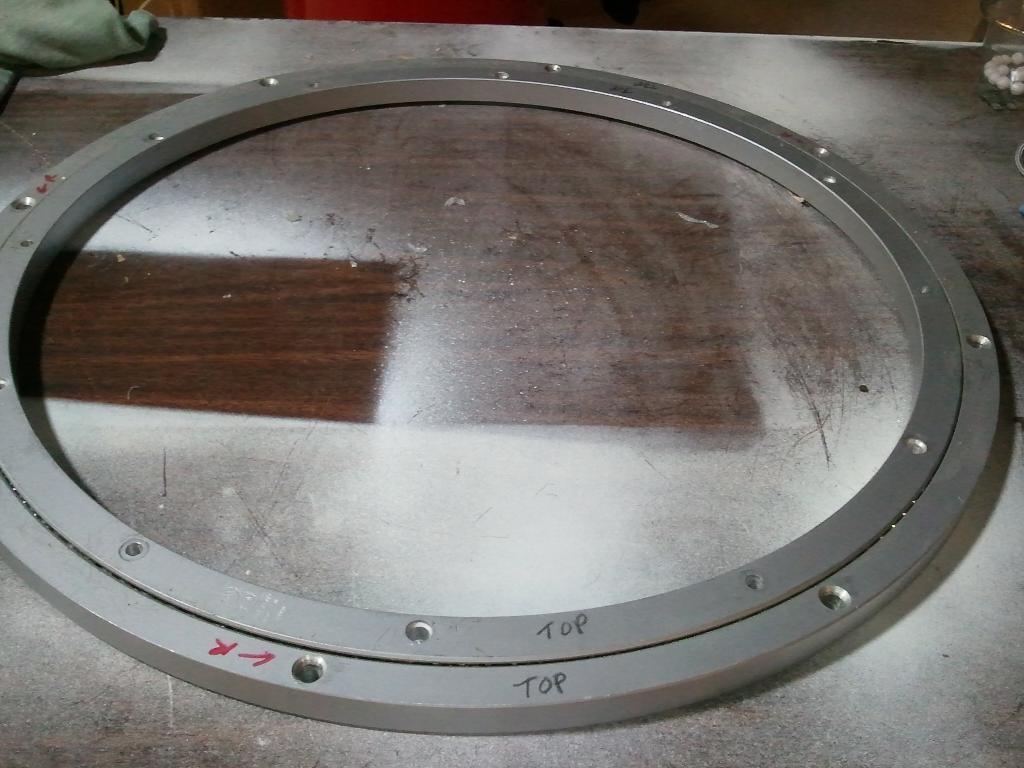Previously I’ve shown attaching the legs to the body, but I haven’t done much with the feet – that’s because it felt fairly shallow to show the motors getting attached without showing it actually driving. To get it to the point of driving, however, took a lot of tweaking and electrical work. However, it has finally all come together, and K4 took his first steps! The shortened version of it is: this was a pain, many parts took a lot of tweaking and work to stabilize properly, but here are his first real steps:
This was a long time in the making, however, so this will be a fairly long post describing what it took. For reference, here are the scooter motor feet after the last update:
So, what needed to happen, was holes had to be drilled at the top for the ankle to mount to the foot, three holes had to be drilled in each side for the motor mounting screws, and then a much larger hole between those for the motor sprocket to fit into (a sprocket is a gear, but instead of touching a gear, it touches a chain), and then finally holes had to be drilled for the wheel axle to fit into. Let me summarize something like 40 hours of work by simply saying that getting all of those into alignment was difficult. Very difficult. Since I had to drill all the holes by hand, and the feet are such odd shapes, I ended up having to use a lot of washers and various spacer rings cut from scrap plastic to get things together. However, with a lot of help from my dad holding, cutting, and generally pointing out where I was making mistakes I did finally get it all in place.
What you can’t see here easily is that the chain is actually much too long for the feet. I had to special order master links for the chain and then use a dremel grinder to split it, and remove 3-4 links. I don’t know the exact number because I actually had to go through the process of removing links twice, because out of an abundance of caution the first time I shortened the chain, I didn’t shorten it enough. It was an extra pain in the ass, but at the end of the day I was able to get a pretty solid connection between the sprockets so even though it was time consuming, I can’t complain too much about it. One distinct issue that I will have to be conscious of going forward is that due to how sensitive the alignment of these parts are, I am hesitant to build the foot normally. I would rather have magnets, velcro, or perhaps some sort of latching system in place that would grant me quick access to the motor screws and the axle to ensure that if it comes out of alignment, I can quickly shift it back.
This overhead shot of the feet shows where the axle and motor are mounted and gives a bit more indication of how things can get out of alignment. It’s hard to tell because of where the motor power cable is in the above image, but I actually believe that the bottom foot has its wheel out of alignment. What I actually had to do to compensate for this was drill a slot for the axle to sit in, and then move it. I tried using lock washers and regular washers to hold it in place, but every time I powered the motor I found it slipping back into its old position. To resolve the issue I actually took some scrap plastic and back-filled the slot to prevent the axle from being able to move. So far this solution has worked well enough to be passable, but as mentioned previously I’m worried enough that I’m leaving adding the sides to the feet until just about the very last steps, lest anything else I do cause them to have problems that I need to correct.
I will save the electronics necessary to get K4 moving for its own, separate post, in the interest of trying to keep things organized.


